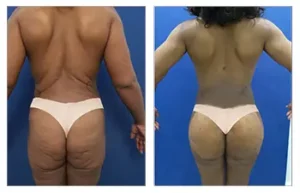Introduction to Liposuction of Legs
Liposuction of legs should be reserved for expert liposuction providers. This is because liposuction of legs is vulnerable to complications. This propensity for complications results from generally compromised blood flow in the legs. As such any degree of swelling or compromise of micro-vessels following liposuction may result in unnecessary damage to the soft tissues and overlying skin.
Moreover, there are areas in the leg that contain vital nerves and vessels that are located superficially making liposuction in this region contraindicated. For this reason alone, any liposuction of the legs should be avoided by the casual provider who does not have an intimate knowledge of the leg soft tissue anatomy. This knowledge includes appreciating fat deposits, the location of muscles and tendons, and all of the nerves and vessels.
No no Zones for Liposuction of Legs
Certain zones should never undergo liposuction. Zones that should never undergo liposuction include the lateral and medial aspect of the lower legs below the knee and down to the ankles, behind the knees, and back of the upper legs where the hamstrings are located. Also, there are areas where the retaining ligaments tightly adhere to the skin down to the muscles. Liposuction in these areas will inevitably cause contour deformities as these ligaments will pull down the skin unnaturally. These areas are called zones of adherence and include the middle medial and lateral thigh region.
The vascular constraints of the lower leg are especially concerning in the lower legs below the knee and such liposuction of legs in this area should be approached with the utmost caution. For example, liposuction of the calves can be performed with success to provide an increased definition of the calves, but this area must be approached with great care.
Liposuction of the lateral thighs should also be performed conservatively and limited to providing a smooth transition from the mid-buttock to the legs. Also, liposuction of the lateral thighs should be performed in a deep plane only to avoid the creation of contour irregularities such as divots and cellulite. Liposuction of the anteromedial, medial, and posterior thighs must also be performed conservatively to avoid the creation of unappealing skin redundancy.
In summary, liposuction of legs is performed at our high-definition liposuction centers but only by experienced liposuction providers. However, liposuction of legs must be approached with caution due to poor intrinsic blood flow. Also, many trap zones should be avoided. If you are interested in undergoing liposuction of your legs, we encourage you to read the rest of this article.

Reshaping for Your Liposuction of Legs
Liposuction is a body contouring treatment that removes stubborn pockets of fat that are unresponsive to diet and exercise. When applied to the legs, liposuction can dramatically slim and reshape your lower body.
How Liposuction of Legs Works
Liposuction slims the legs by suctioning out excess fat cells through small incisions. A plastic surgeon uses a cannula attached to a vacuum to dislodge and extract unwanted fat deposits. Local anesthesia keeps the area numb during treatment.
Common zones targeted on the legs include:
Outer and Inner Thighs
Reshaping saddlebags and inner thighs provides a slimmer thigh contour.
Knees
Lipo around the knees can reduce fat bulges.
Calves
Removing calf fat creates more defined, athletic lower legs.
Ankles
Slimming fat pockets around the ankles provide a more delicate definition.
Benefits of Liposuction for Legs
Liposculpting the legs offers aesthetic improvements such as:
- More slender, contoured shape to thighs
- Reduction of fat bulges around knees and ankles
- Better proportion between upper and lower legs
- More defined calves and slimmer ankles
- Improved fit into pants, skirts, and dresses
- Enhanced comfort in slimmer clothing
For individuals struggling with stubborn lower body fat, liposuction can provide transformative results.
Recovery After Liposuction of Legs
Initial recovery involves [4]:
- Wearing compression garments for several weeks
- Avoiding strenuous activity for about 4-6 weeks
- Expecting bruising and swelling that subsides gradually
- Returning to non-physical work within a few days
- Resuming exercise after several weeks
Final results emerge over 3-6 months as swelling resolves. Optimal outcomes usually require 6 months of healing.
Candidates for Liposuction of Legs
The ideal candidates for liposuction of thighs that include the legs are:
- In overall good health
- Have pockets of pinchable fat in thigh, knee, or calf areas
- Possess good skin elasticity
- Non-smokers
- Within 30 lbs. of their ideal weight
- Realistic expectations for contouring, not major weight loss
Consult a board-certified cosmetic or plastic surgeon to determine if your goals make you a good candidate for leg liposuction.

